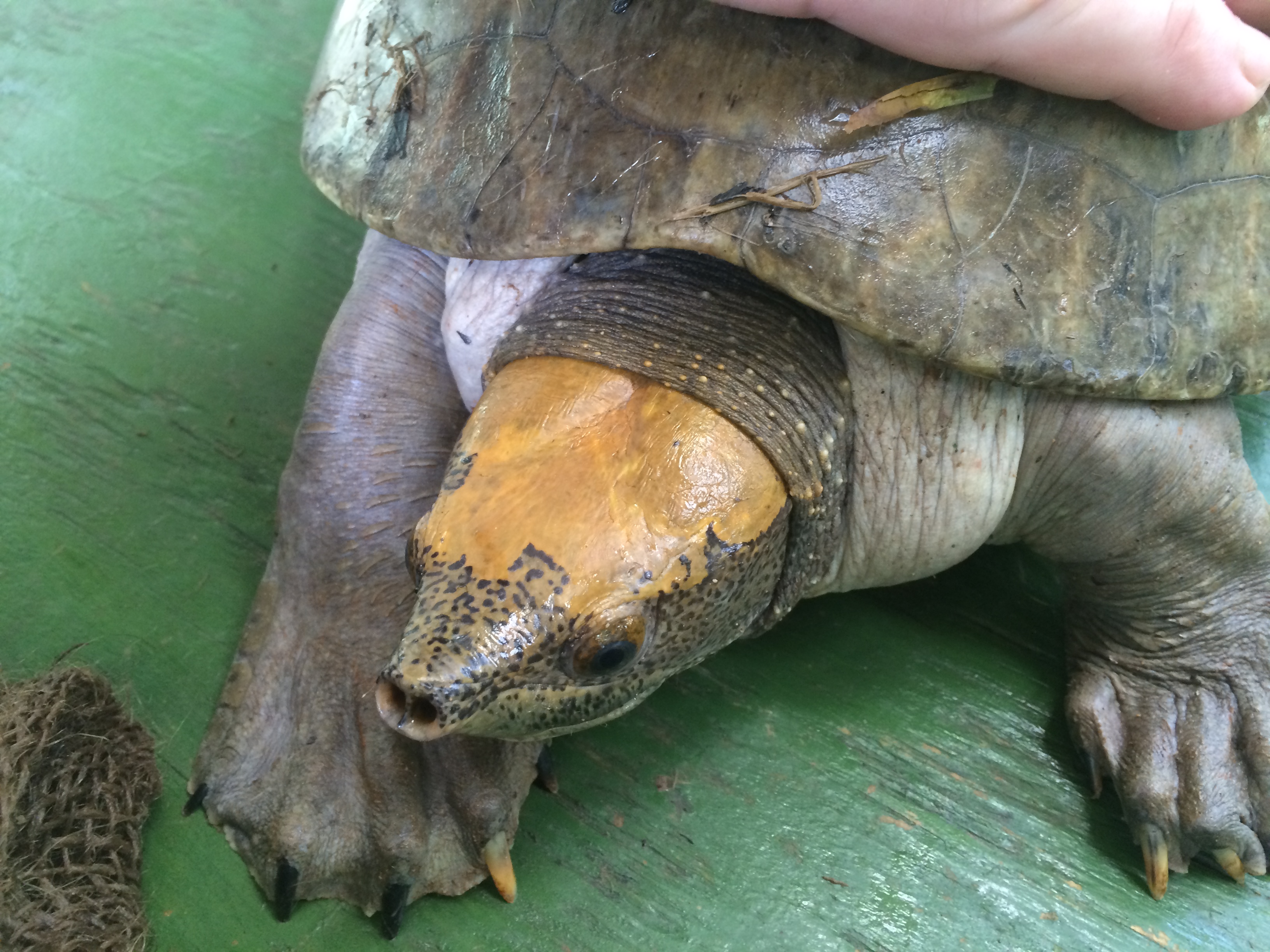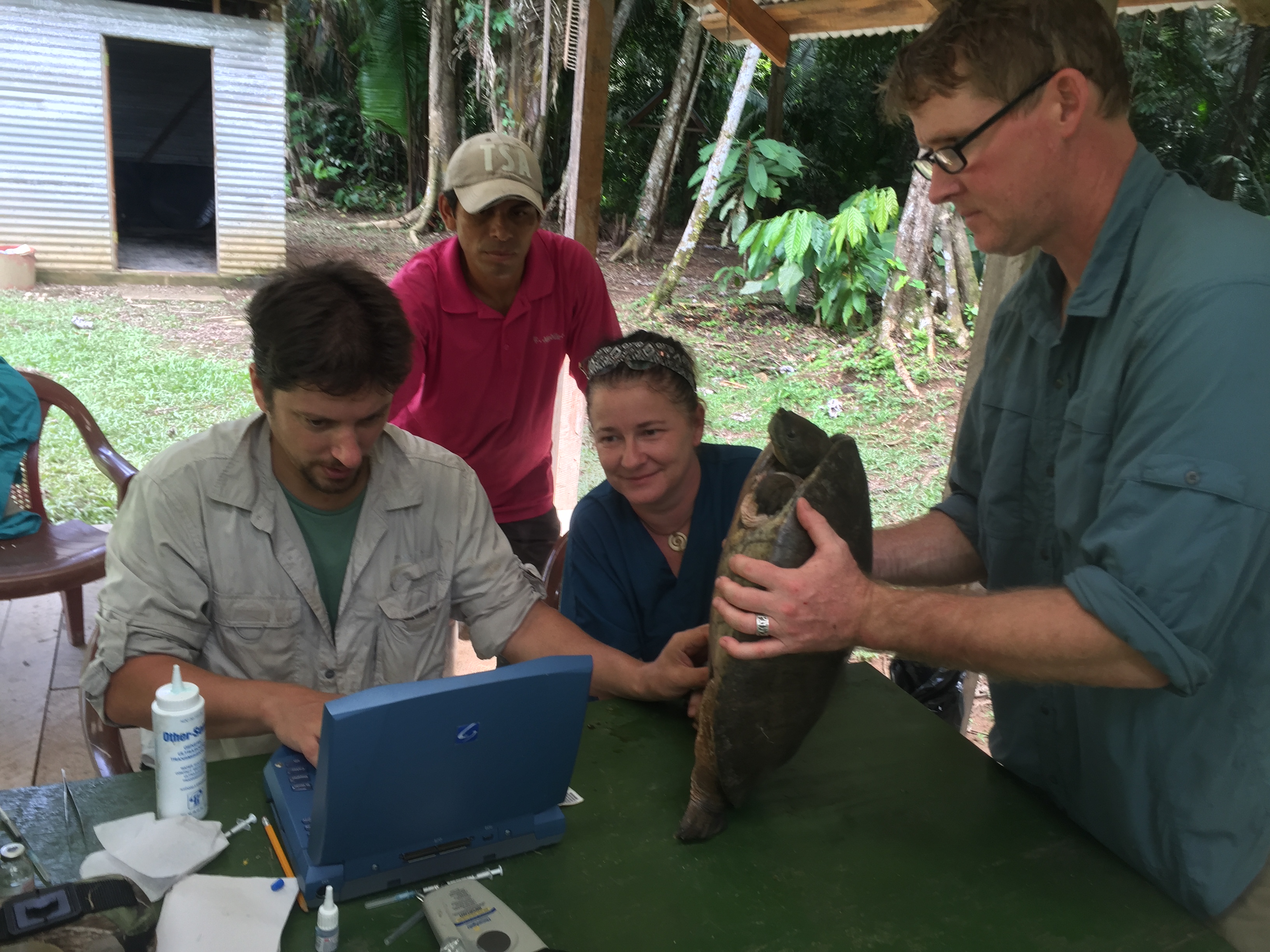Ultrasound Exams Predict Breakout Year for Hicatee Hatchlings in 2017
by Howard Goldstein 
The Hicatee Conservation and Research Center (HCRC) is a joint project of the TSA and the Belize Foundation for Research and Environmental Education (BFREE). The Center is located on the grounds of BFREE in southern Belize. 
On 17-19 September, members of the TSA joined BFREE staff in Belize in performing annual health checks of all the Hicatee (Dermatemys mawii) at the HCRC. Dr. Shane Boylan, DVM of the South Carolina Aquarium, and Dr. Thomas Rainwater were joined at the Center by Felicia Cruz and Gilberto Young of the Belize Fisheries Department, veterinarian Dr. Isabel Paquet from the Cayo District, Robert Mendyk of the Jacksonville Zoo, Dr. Ben Atkinson of Flagler College, and Jacob Marlin and Tom Pop of BFREE. In addition, Richard and Carol Foster were present as they continue shooting footage for their documentary film about the Hicatee.
What a difference a year makes! Last year, the TSA and the Hicatee Conservation and Research Center (HCRC) staff were pleased to announce that a mature female had once again nested at the Center, amid the revelation that most of the animals that had been presumed to be females were actually immature males. Seven hatchlings had already been produced in 2015, and another five hatched in 2016.
This year, an ultrasound performed by Dr. Boylan revealed 20 females carrying eggs or follicles, and 60-120 eggs are expected to be laid in December. This is a huge growth and very encouraging, as the HCRC hopes to both establish a viable captive breeding colony of Hicatee in Belize and test the eventual feasibility of establishing commercial Hicatee farms in order to take the pressure off of the wild population. For now, it is a great conservation victory to expect exponentially larger numbers of hatchlings for the coming year.

The population currently stands at 54 Hicatee at the HCRC. The number of reproductive females has swelled to 20 animals, along with16 confirmed males, and six subadults of currently indeterminate sex. At the onset of sexual maturity, male Hicatee develop yellow heads and enlarged tails, and a number of animals that once been believed female--but later predicted by Ph.D. student Nichole Bishop to be immature males, based on size regression analysis–are now demonstrating that they are, indeed, males. Interestingly, the males are displaying the telltale signs of sexual maturity at different sizes, a phenomenon that Bishop will likely continue to study as this new information about the Hicatee comes to light.
While the increased population of reproductive females bodes well for larger-scale captive breeding at the HCRC, the high density of males may present some challenges. The males may be becoming aggressive in their zeal to breed amidst so many suitors, and the females are possibly being subjected to near continuous male attentions. To address this issue, 10 of the males will be removed from the breeding ponds and released back into the Sibun River from which they were originally captured.

Another exciting project stemming from the 20 females laden with eggs or follicles will be trying to capture, for the first time ever on film, photos and footage of Hicatee nesting. Using a solar powered video camera and battery operated camera traps, the HCRC is hoping to record the first ever nesting footage for this species. Given the large number of gravid and likely to become gravid females in the ponds, well placed cameras have a much greater chance than ever before of recording this process. This is especially significant in that the nesting ecology of the Hicatee is very poorly known, with few confirmed Hicatee nests ever found in the wild.
Indeed, the HCRC represents the most detailed and in-depth study of a captive Hicatee population anywhere, and many firsts are expected. As the Hicatee population continues to expand at the HCRC, so too will our knowledge of this species, allowing the HCRC to better secure the future of this critically endangered turtle.
